

SOUTHEAST
March 2008

2 of 3


SOUTHEAST
March 2008


2 of 3
The weather only gets worse the next day, so Sunday is spent driving to South Carolina where I hole up in a
cheap motel, eat junk food, and watch really bad TV shows (the guilty pleasures of a road trip). Monday starts off
cold, but I keep my appointed rendezvous with Mike and Steve (many thanks to you both!) at the Rattlesnake study
site, hoping temps will reach the promised 70s.
We start off by checking out arrays of artificial cover, figuring our best chances for finding snakes in the chilly
morning will be under tin lying in the sun, but all we find are Lowcountry Mambas (Steve’s name for Racers).
By afternoon it’s warming up so we switch tactics and begin to walk burns. The technique is to wander a section
of forest recently cleared by a controlled fire, looking for basking critters that have emerged near the charred stumps.
On one occasion I glance into an opening and almost get excited when I see a pattern of black and yellow
―
Diamondback?!
―
but it turns out to be a shy Box Turtle half hidden in the stump hole.
Hognose Snakes, on the other hand, are completely exposed, simply lying out in the open on the black forest
floor. Here’s one exactly as found:
Up until the previous year I had never seen a Hognose in the field, but on this trip I find four. Their elaborate
defensive displays
―
puffing and hooding, then rolling around in dramatic death throes
―
are well-known, but what
I hadn’t appreciated until seeing multiple Heterodons is how much their individual responses can vary.
For example, this one recoils when disturbed, followed by lots of curling up and hood spreading, but it never
attempts to flee or feign death.
In comparison, as soon as the Hognose on the left realizes it has been detected, it just rolls over and dies. Over
and over again. The one on the right, however, is determined to escape with little puffing or posturing. Whenever I
block its path, the snake reverses direction and continues to crawl as quickly as possible to get away. Even when
touched, it does not “die.”
Not all the snakes we find are on the ground. A peek behind bark reveals this Scarlet Kingsnake on the trunk of
a pine tree.
The warming trend continues, providing us with the first road-cruising opportunity of the year. A bit before
dark Mike jumps from the car to confront a feisty Garter Snake. A moment later he’s back in the car, reeking of musk
―
a clear victory for the snake
―
but smiling with perverse satisfaction as the new season is officially anointed.
Into the evening and we begin to encounter Copperheads, one of the most common snakes of Carolina
Lowcountry nights.
Amphibians are also beginning to call, and I’m extremely pleased when this particular frog hops in front of us, a
first-time find for me.
Unfortunately, the warming trend also works against us. As the following days work their way into the 80s, it
becomes apparent that the Rattlesnakes have left their stump holes. Instead of staying close to their underground
winter sites, where they could be found basking in the open during the spring emergence, higher temps have given
the signal that it’s time to seek a meal and a mate, and so the snakes disperse.
We do find one Canebrake under tin, a new snake that adds to the sample size, but Diamondbacks completely
elude us. To confirm our belief that they had scattered, we track a radio-tagged specimen, and as suspected, it has
traveled far from its hibernaculum to hide under vegetation.
Of course, sometimes you just get lucky, which is what happens when I stumble upon
―
quite literally, as I
almost step on
―
this young Canebrake crawling through the pines.
But my favorite discovery is finding this Copperhead tucked up against a log. Once we realize the snakes are
more likely to be hunting than basking, we shift our search image from stump holes to horizontal edges along the
ground, where sit-and-wait predators might be coiled in ambush position.
So I round this log and visually scan its length, and right there, exactly as I had imagined
―
exactly where it’s
supposed to be
―
is this beautiful snake in its own natural setting. For me, more than finding target species or scoring
big numbers, the greatest satisfaction in herping is from that rare experience of a perfectly composed moment.
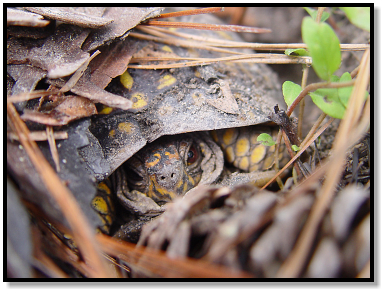
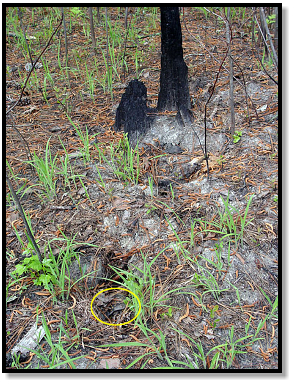
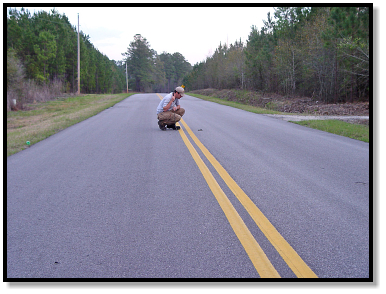


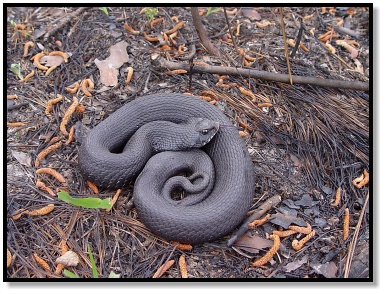

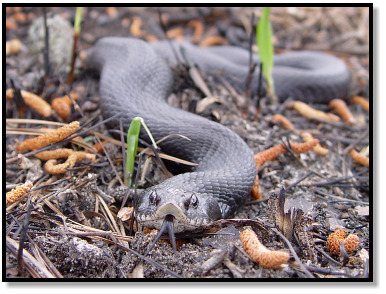
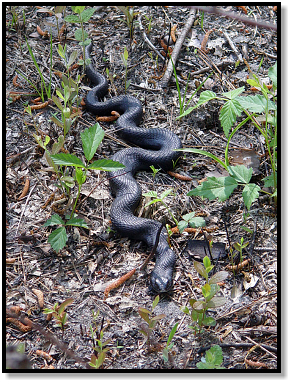
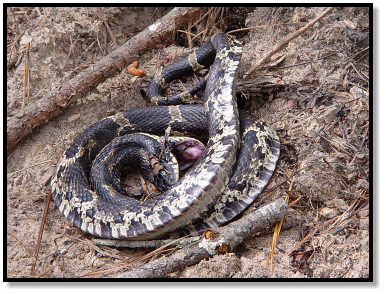
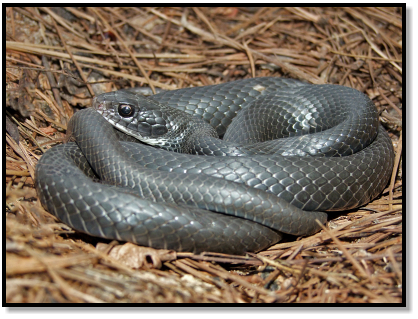
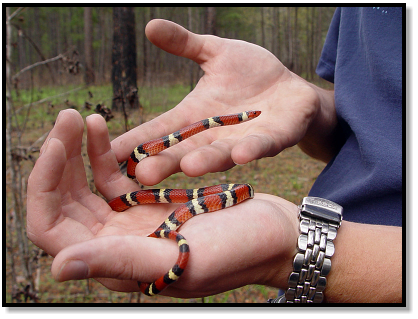

Eastern Box Turtle
Terrapene carolina
Eastern Hognose Snake
Heterodon platyrhinos
Scarlet Kingsnake
Lampropeltis triangulum elapsoides
Eastern Garter Snake
Thamnophis sirtalis sirtalis
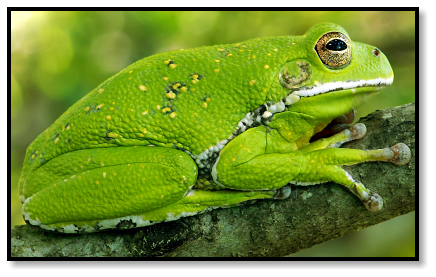
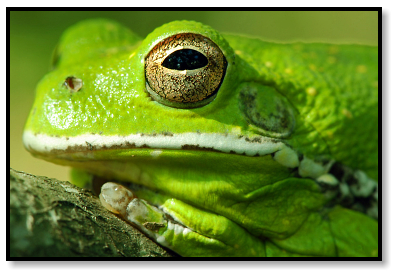

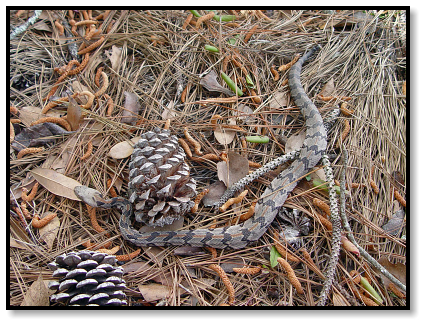
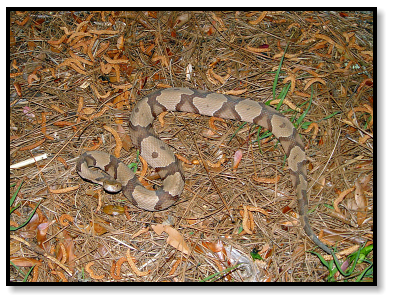

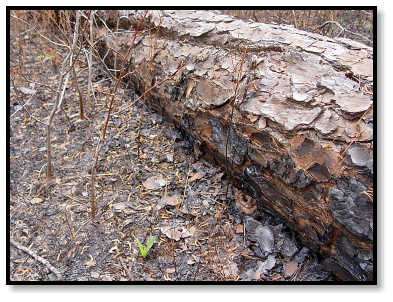
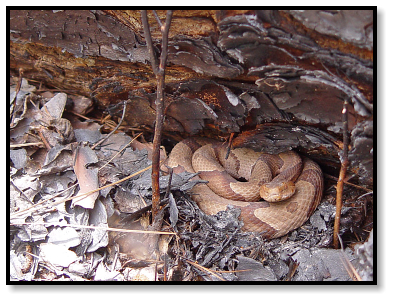
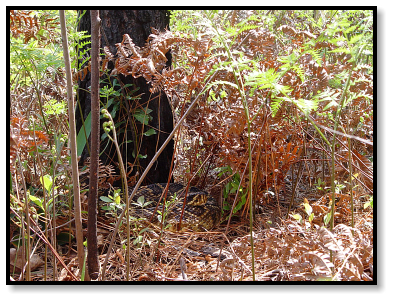
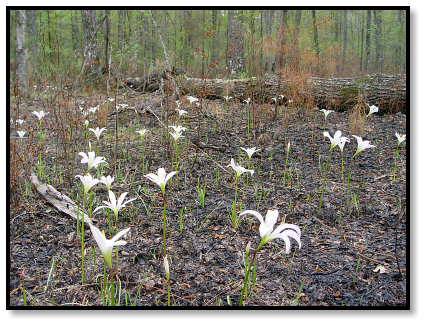
Southern Copperhead
Agkistrodon contortrix contortrix
Barking Tree Frog
Hyla gratiosa
Canebrake Rattlesnake
Crotalus horridus
Southern coastal plain form of Timber Rattlesnake
Eastern Diamondback Rattlesnake
Crotalus adamanteus








